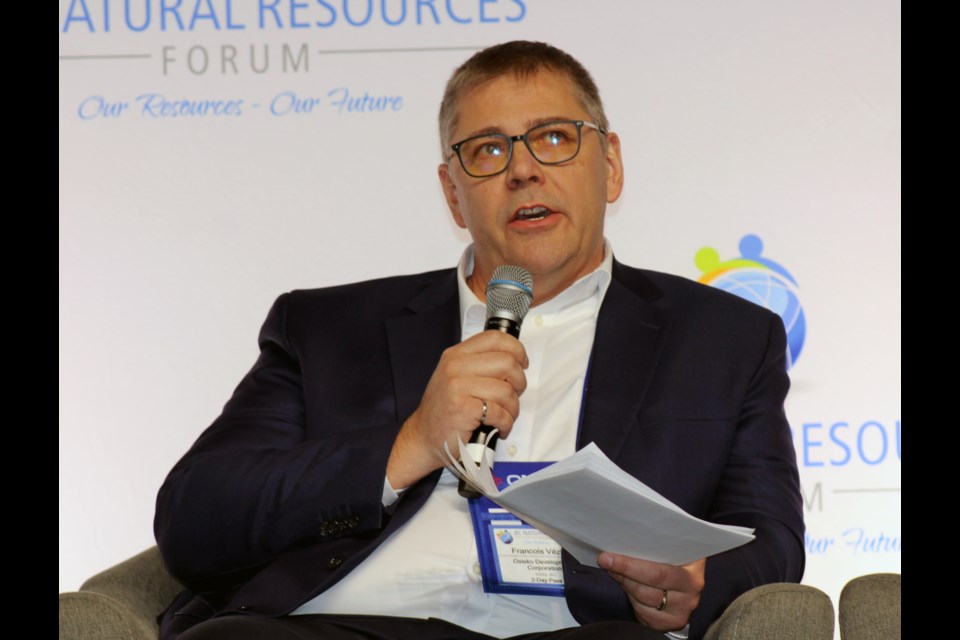The Cariboo Gold Rush of the 1860s that brought thousands of prospectors to the Barkerville area made some of them extremely rich.
The intense mining activity that brought roads, services and housing to the Cariboo region depleted known deposits, but they certainly did not find all of the gold that lies gleaming below the surface.
Quebec mining firm Osisko Development Corp. knows there’s much more to be discovered in the Wells-Barkerville corridor, an 83-kilometre mineral strike that covers 192,000 hectares. Having cleared the environmental assessment stage, the company is going ahead with its Cariboo Gold Project to build an underground mine near the town of Wells, 181 kilometres southeast of Prince George.
“For us it’s the second gold rush coming, but modernized,” said Francois Vezina, Osisko’s senior vice-president of project development, technical services and environment. “We’re bringing innovation in our project and you’ll see electrification for sure. From an environmental aspect, this is a mechanical process that doesn’t require a lot of energy, doesn’t require chemicals.”
The province granted the environmental assessment certificate in October. One of the 22 conditions of that approval is that Osisko will create a new water supply for the more than 200 residents of Wells.
The project has the consent of the Williams Lake First Nation and the Lhatko Dene Nation, while the Xat?ull First Nation does not oppose the mine while the process of obtaining consent is ongoing.
Osisko, which began exploring the site in 2016, expects to have Mines Act and Environmental Management Act permits in place by June. Assuming that happens, production could begin late in 2026.
“We’re well-advanced,” we were really proud to obtain he EA certificate in October and the permitting started early,” said Vezina, in Prince George last week to speak about mining at the BC Natural Resources Forum.
Construction at the two Cariboo Gold sites would take four years and is expected to contribute $588 million to the regional economy over four years. Another $466 million will be spent in mining operations over the projected 12-year life of the mine. Vezina said more than 500 workers will be needed in the building stage and there will be jobs for 500 at the mine, which is within a two-hour drive from Prince George.
“When we talk to our investors this is prime land to construct a mine,” said Vezina. “We have access to BC Hydro clean energy, we have access by highway, we have the knowledge, the providers, the consultants, everything is close compared to going up north. It’s very convenient.
The Wells deposit, estimated at 1.87 million ounces, is worth $4.86 billion, based on the current market price of $2,600 per ounce.
“Right now we’re only going to go to depth of 300 metres, so it has lot of reserve,” he said. “We have real faith it stands to even a kilometre of depth, so we see a really long life of mine there. We’ve just touched what was more obvious and has better access for us right now, but we see there’s a lot of potential for the future.”
The mine will be built on the site of former Cariboo Gold Quartz mine, bordering on the village of Wells. The mineral strike extends 83 km to the southeast past Barkerville. In an agreement with the province, Osisko will reclaim and rejuvenate parts of the tailings area and waste dump used for the old mine, which is still contaminating the soil.The initial plan is to drill four kilometres using mostly remote equipment to minimize human activity deep in the mine shaft and increase the safety factor of drilling operations.
“We’re pushing a lot for training,” said Vezina. “It’s a new mine, there’s new technology and it’s not going to be the old ways where you had operators on every piece of equipment. We’re looking not only for automation but autonomous equipment kind of like robots, so more a control room for the underground portion.
“The mill will be highly mechanized and automated as well, so it will be lot different from what people have as an image for the mine.”
Osisko will continue to consult with colleges and universities to produce skilled workers for the mine, especially those with knowledge of electrical engineering, technical electricity and electromechanics.
Three-quarters of the underground fleet at Cariboo Gold will run on electricity and Vezina says the company will continue to look for ways to go all-electric.
The 4,900 tonnes of ore to be extracted daily will be trucked 120 kilometres (half on highway, half on logging road) for sorting at the mill site of the Kinross Quesnel River (QR) gold mine (58 km southeast of Quesnel), which operated from 1995-98.
“The new tails are going to be used to reclaim the old tailings facility that was there,” said Vezina.
“Sustainable development is important to us. The past operator left scars there and that was important for us to put our new facility on the same site so that we can reclaim and restore it.”



